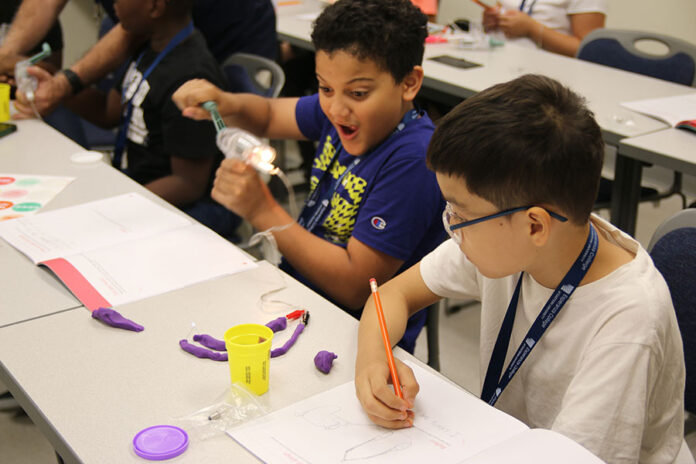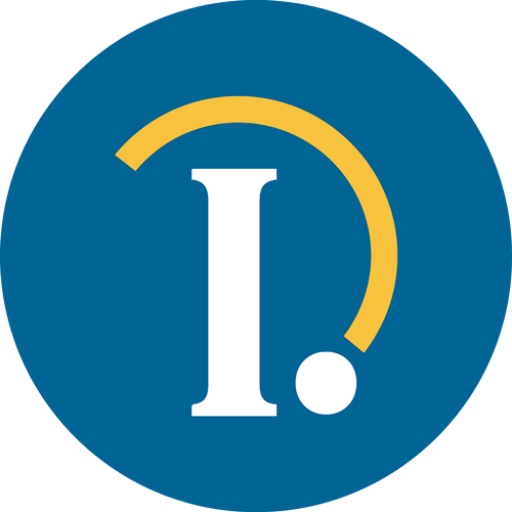
The first week of August Esperanza College became an incubator of future scientists. We offered two programs for children and youth from second through twelve grades.
STEM Hope Pathways Summer Experience
The STEM Hope Pathways Summer Experience for high school students exposed twenty-two youth to skills and experiments carried out in research laboratories. In five days, the students learned how to use lab equipment, how to follow protocols and more importantly how to think and analyze data like scientists.
They used fruit flies as a model to study the effect of nutritional supplements in diabetes. Christopher Aichele, one of the instructors said, “the students get excited about working with the fruit flies because they start to see the impact of how this experiment could help the sick in their family and community.”
The eCLOSE institute has collaborated with Esperanza for many years to bring this experience to students in Hunting Park. Dara Ruiz-Whalen is the Executive Director of eCLOSE. The collaboration “open the STEM pipeline floodgates wide offering programs to engage student scientists in research surrounding a disease that impacts their families and community: Diabetes.”
The scientists learned how to use pipettes, microscopes, and other lab equipment. They learned how to identify the fruit flies’ phenotypes, prepare their food, and how to handle them. On the last day, the students presented their results for the week. The experience of presenting your work is very important for scientists. Maria Genao, one of the participants said that “I had so much fun learning in this program.”
Science in the Summer
For the first time we offered a program for younger children at Esperanza College. The program “GSK Science in the Summer” is supported by GSK and led by the Franklin Institute. Esperanza is one of forty-two organizations offering the program. Dr. Darryl Williams, Senior Vice President of Science and Education at the Franklin Institute, indicated that the program is “uniquely impactful in that we can reach youth where they are, in an environment where they are familiar”. Thirty-seven students between second and sixth grade learned how to become a scientist by making observations, having ideas, testing models, and working as a team.
The curriculum “Be a Physicist” exposed students to physics and energy concepts and to the following careers: sound engineer, power plant engineer, accident investigator, laser scientist and material scientist.
Alberthson Polanco, one of the young scientists said, “is that we learned while we had fun”. The boy enjoyed “the lasers reflecting over different areas and also creating a sound amplifier using household items.”
Yarnelis Rodriguez, one of the program educators likes to “represent women and Latinos that love science.” She added that “enjoying while instructing the children on how fascinating the science is and seeing the incredible ideas that they have is an invaluable experience for me.”
Participants from both programs were exposed to cutting edge technology available at Esperanza College. Mashaal Syed, a professor at the college, indicated that “our younger scientists excitedly explored relevant concepts in physics like projectile motion and electric circuits” using the Science software from Anatomage. On the other hand, the high school students “were fascinated by virtual dissections of the human body with the Anatomage table. The students were also able to put themselves in the shoes of a healthcare provider through our clinical simulation software Body Interact, as they were tasked with caring for patients with Diabetes in an emergency room setting.” The students also learned about the capabilities of 3D printing as a means of improving the health of the community.
“Science is critical to our lives and ensuring that children from backgrounds currently underrepresented in STEM fields have opportunities to see themselves as scientists will help exponentially create a more diverse workforce” commented Dr. Williams.
For many participants this summer was just the first step. Maria mentioned that “now I really want to learn more and help more people with diseases like diabetes.” And the young Alberthson added that “it’s been a good thing that I would like to do when I grow up.” These scientists, from the youngest to the oldest ones are a source of inspiration for me. The future is bright.






















